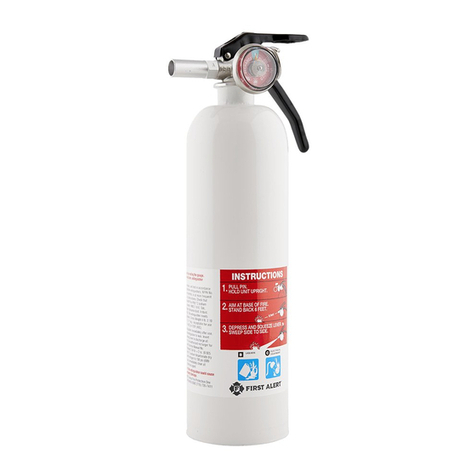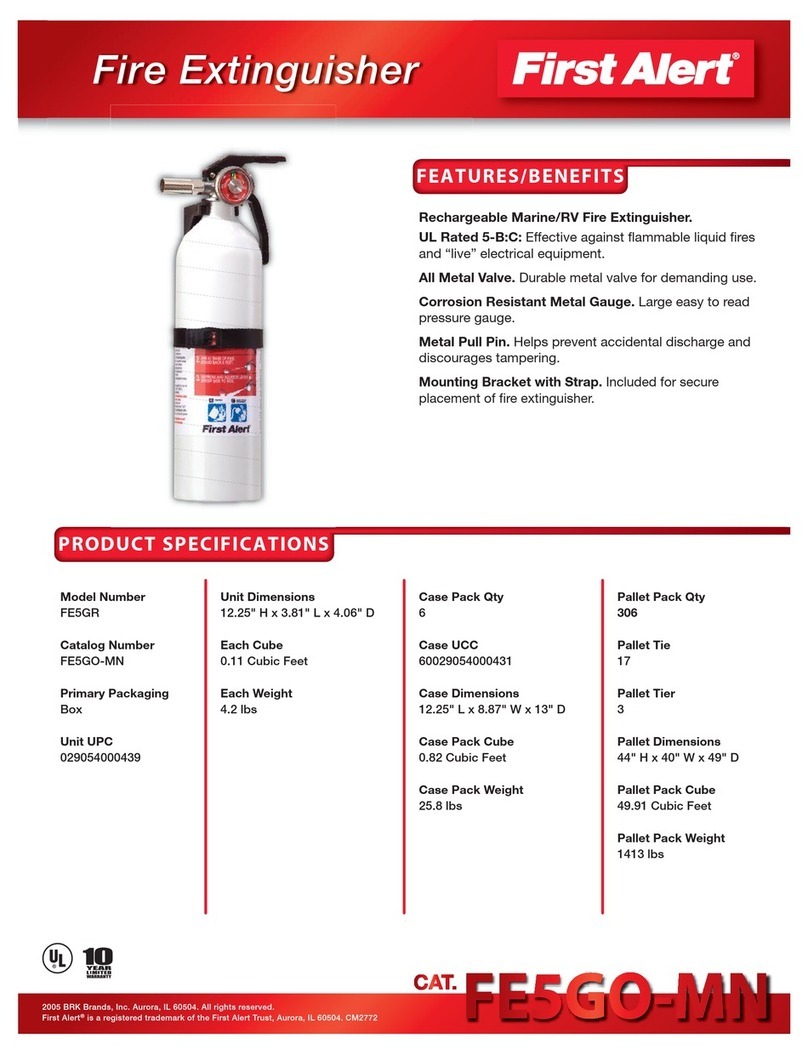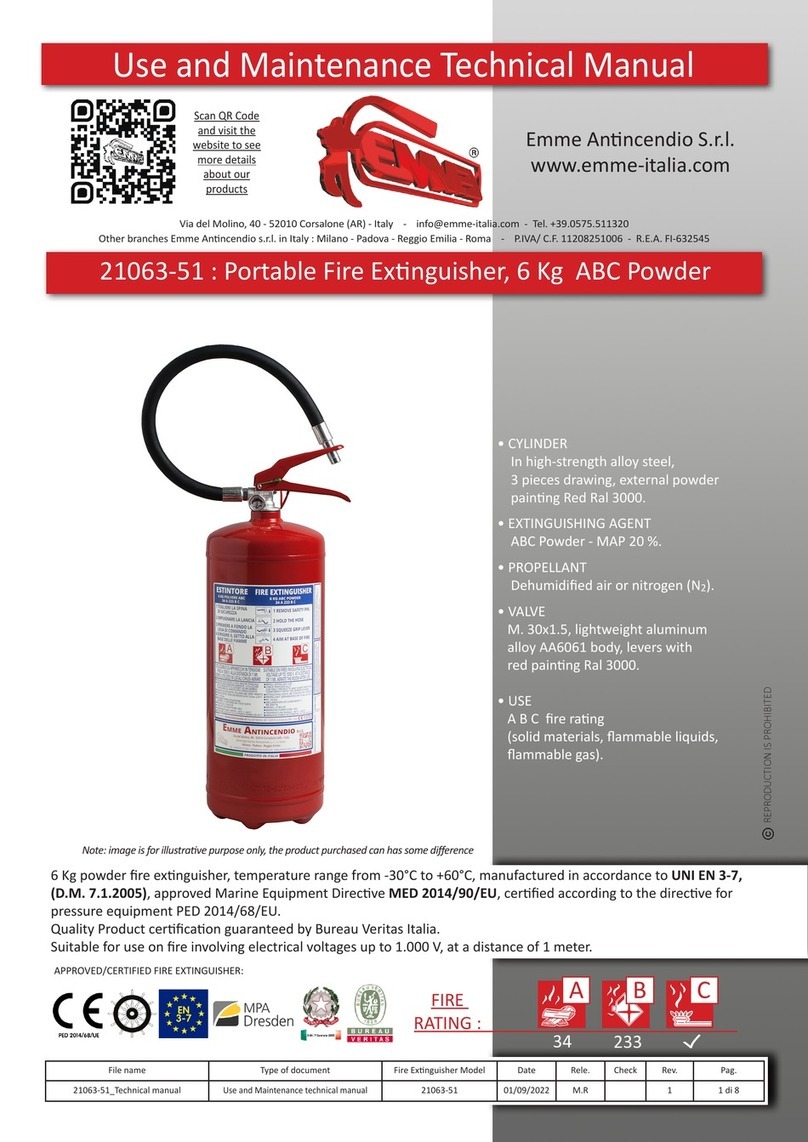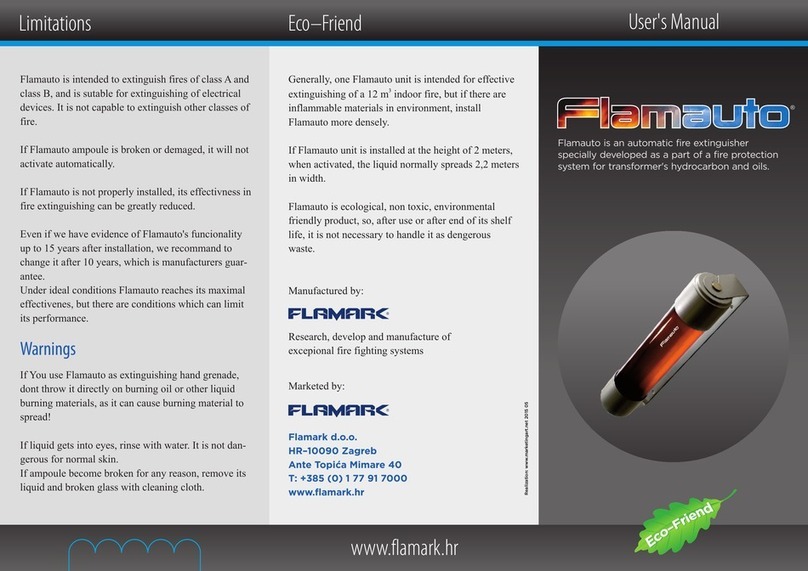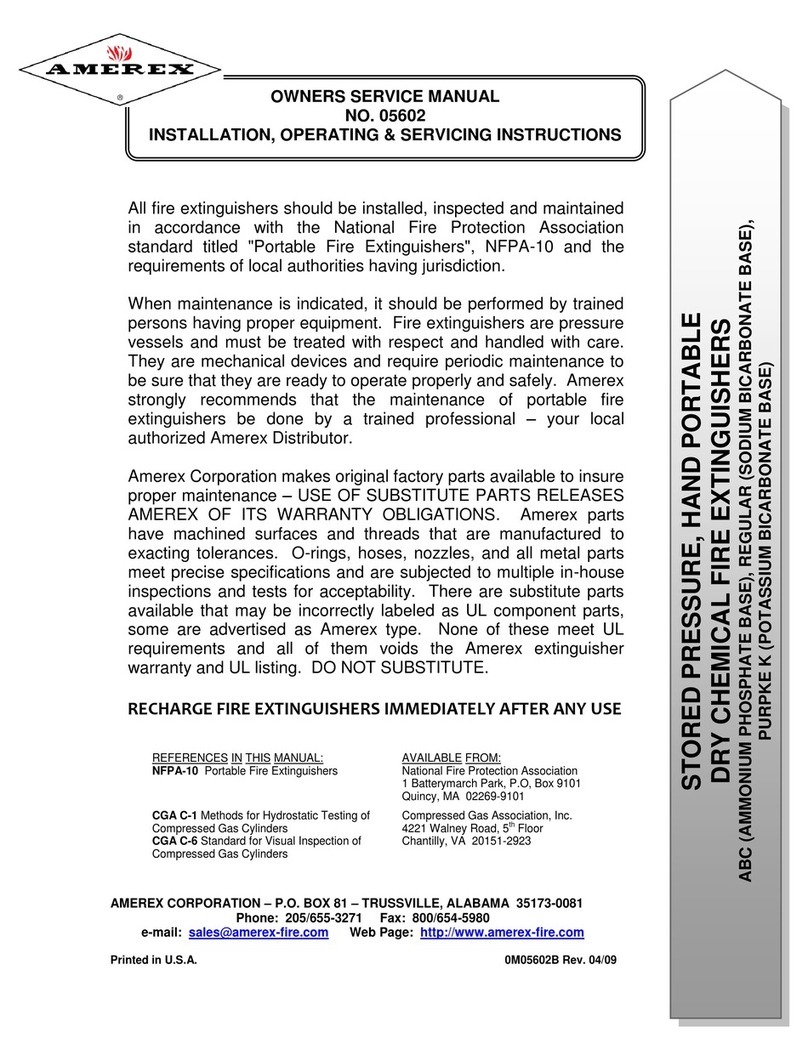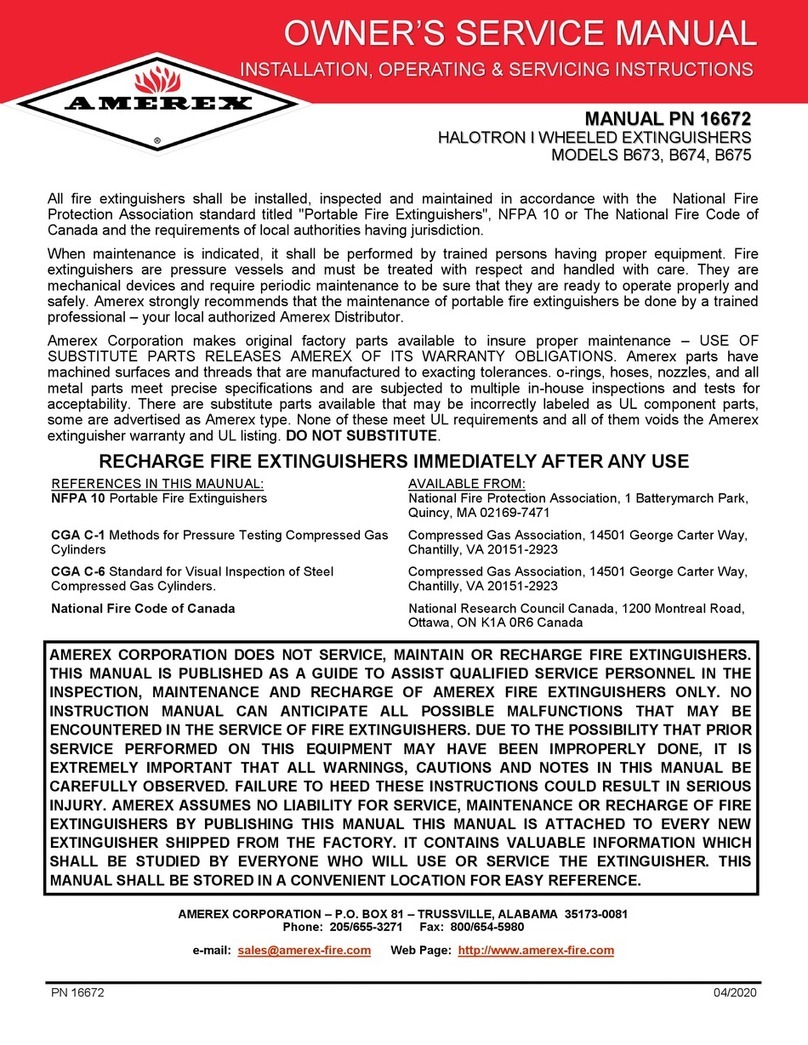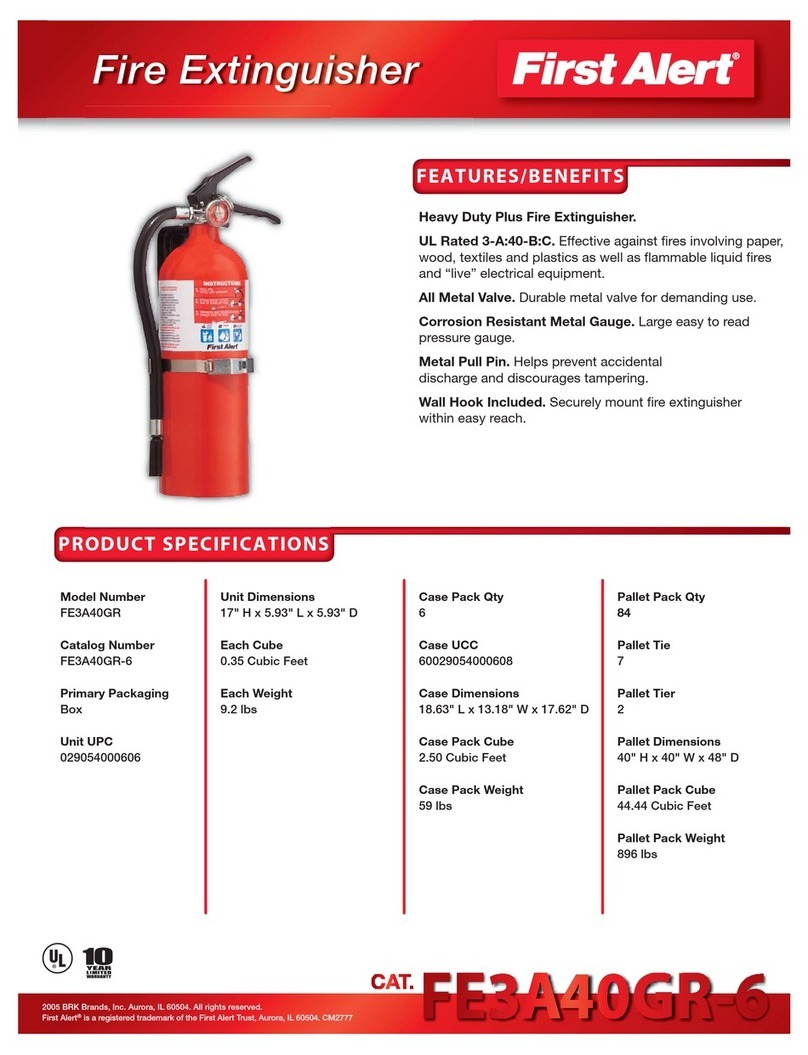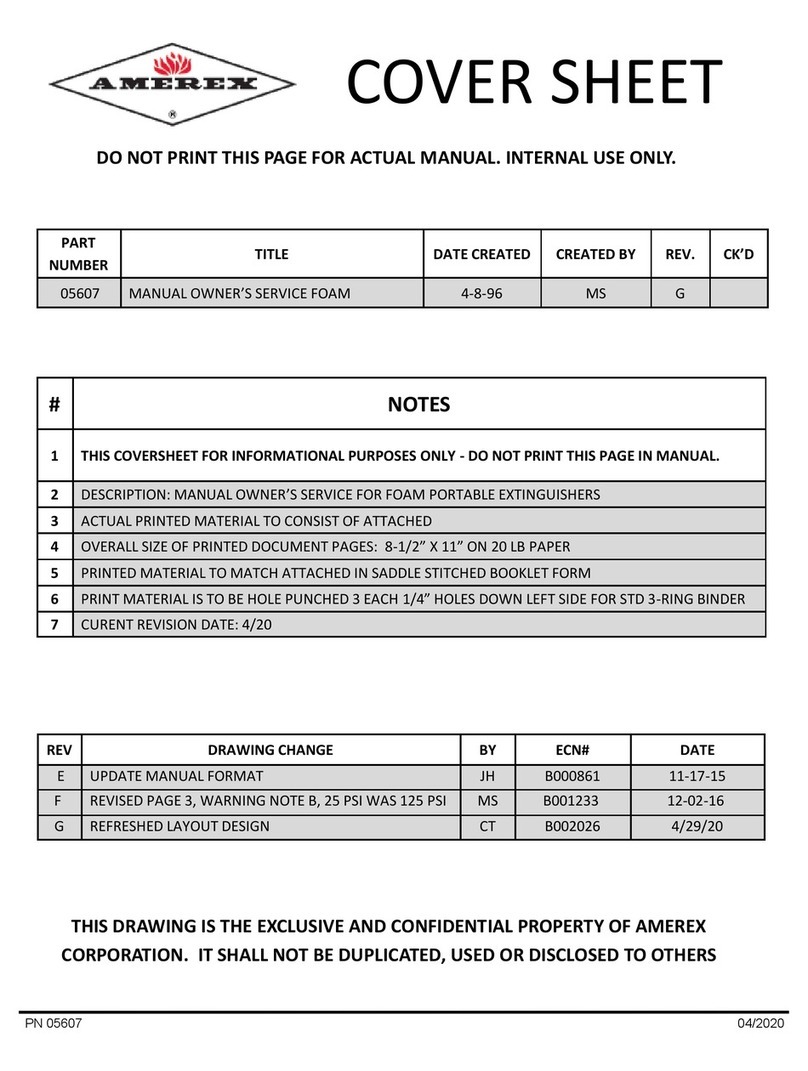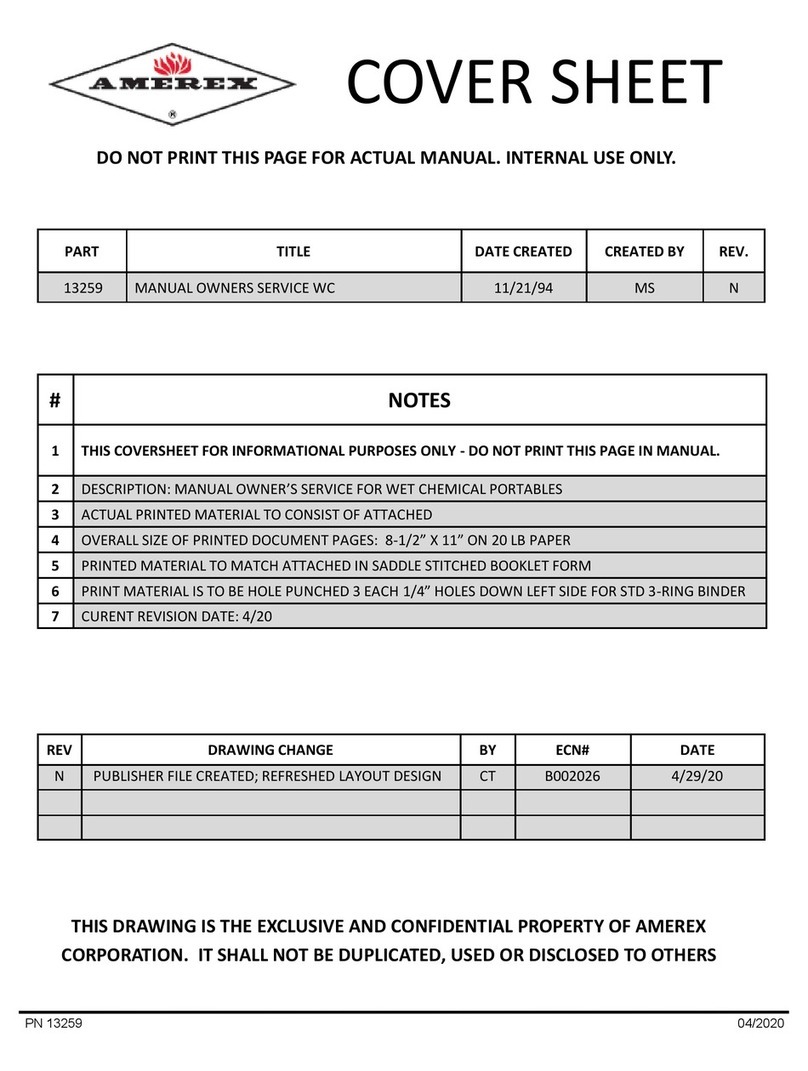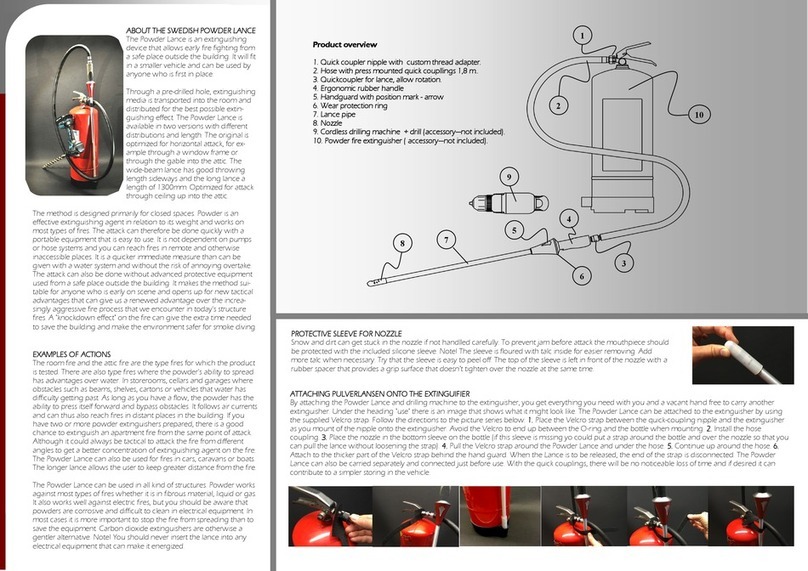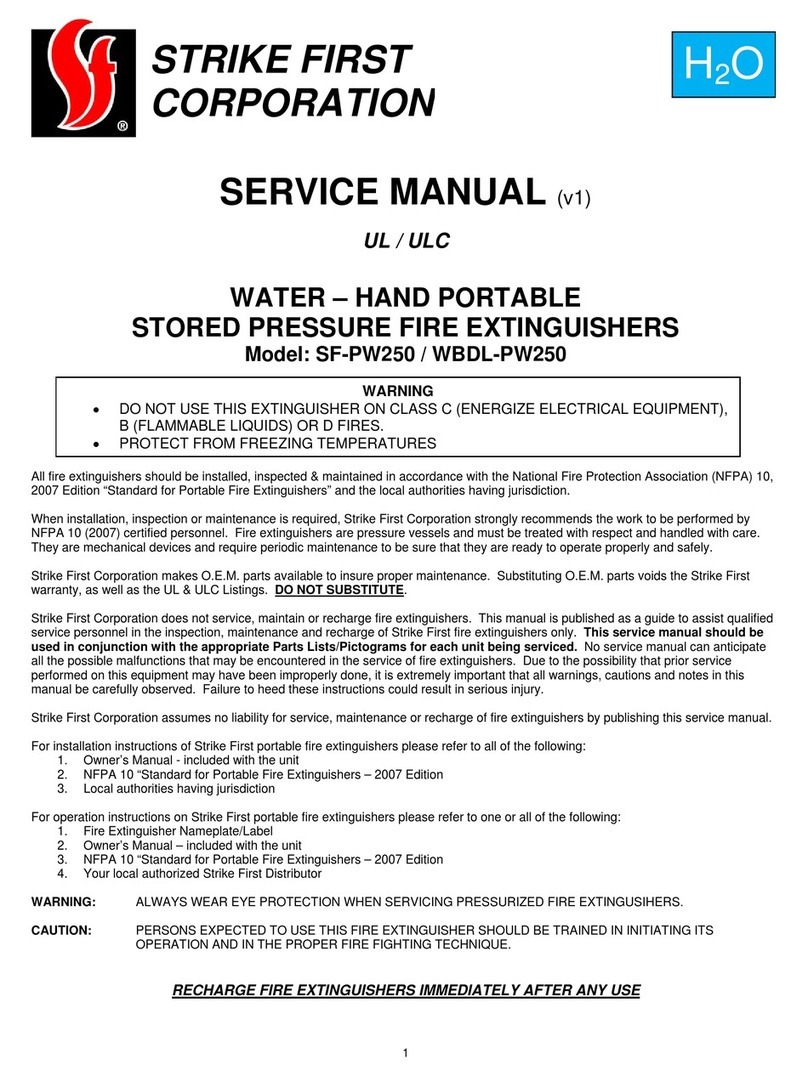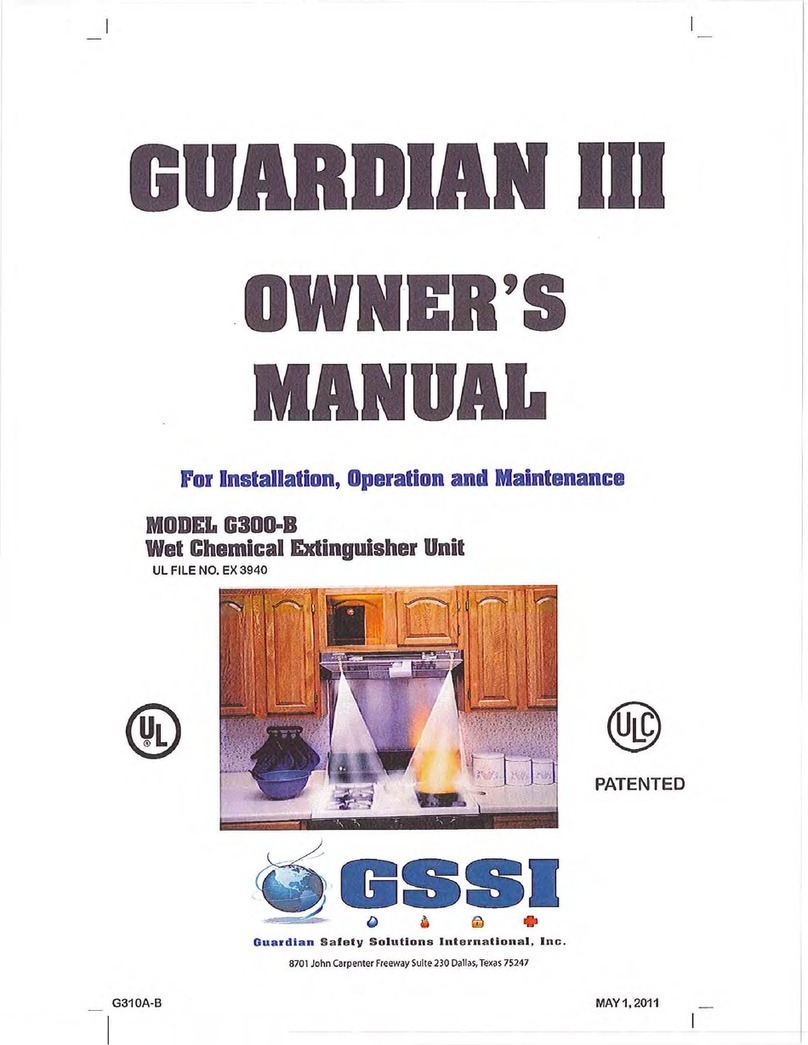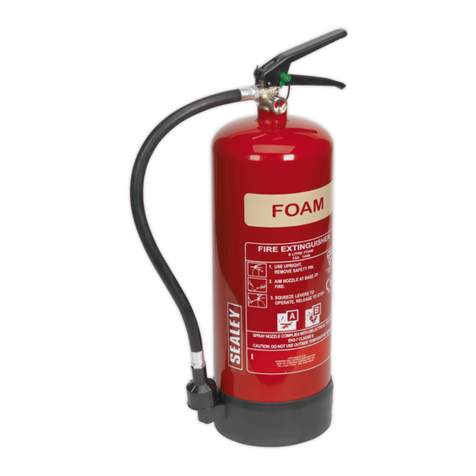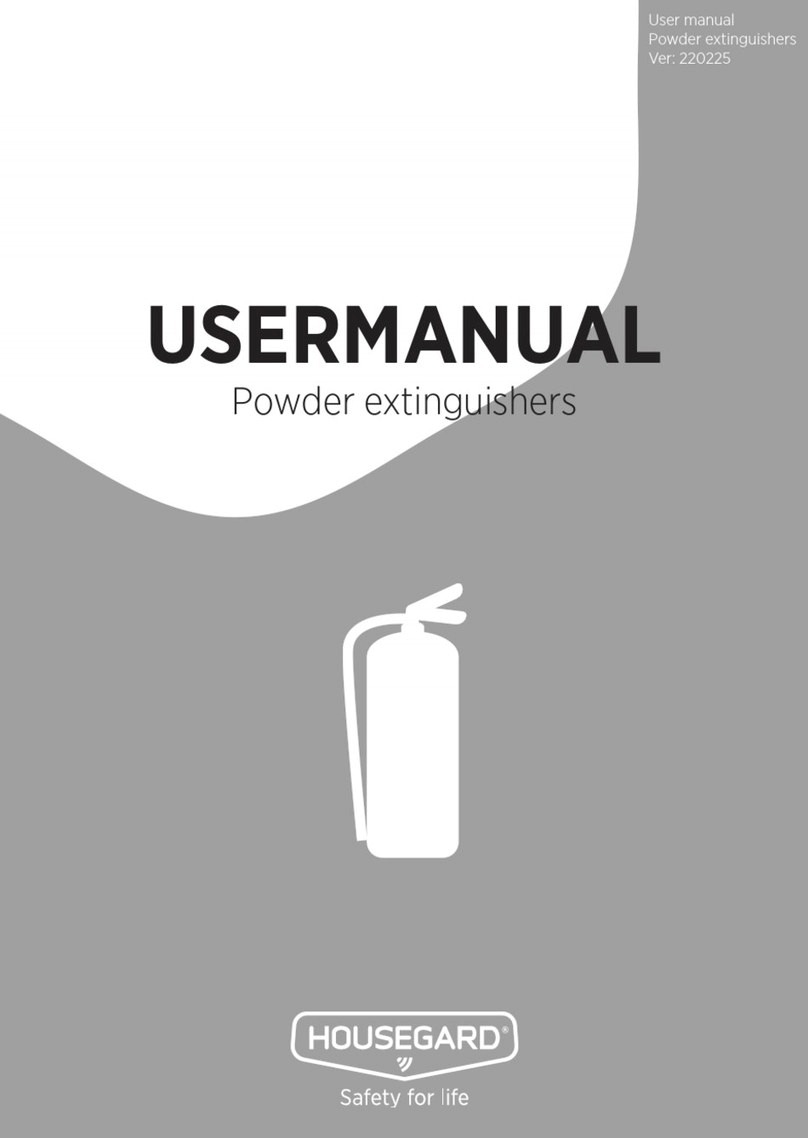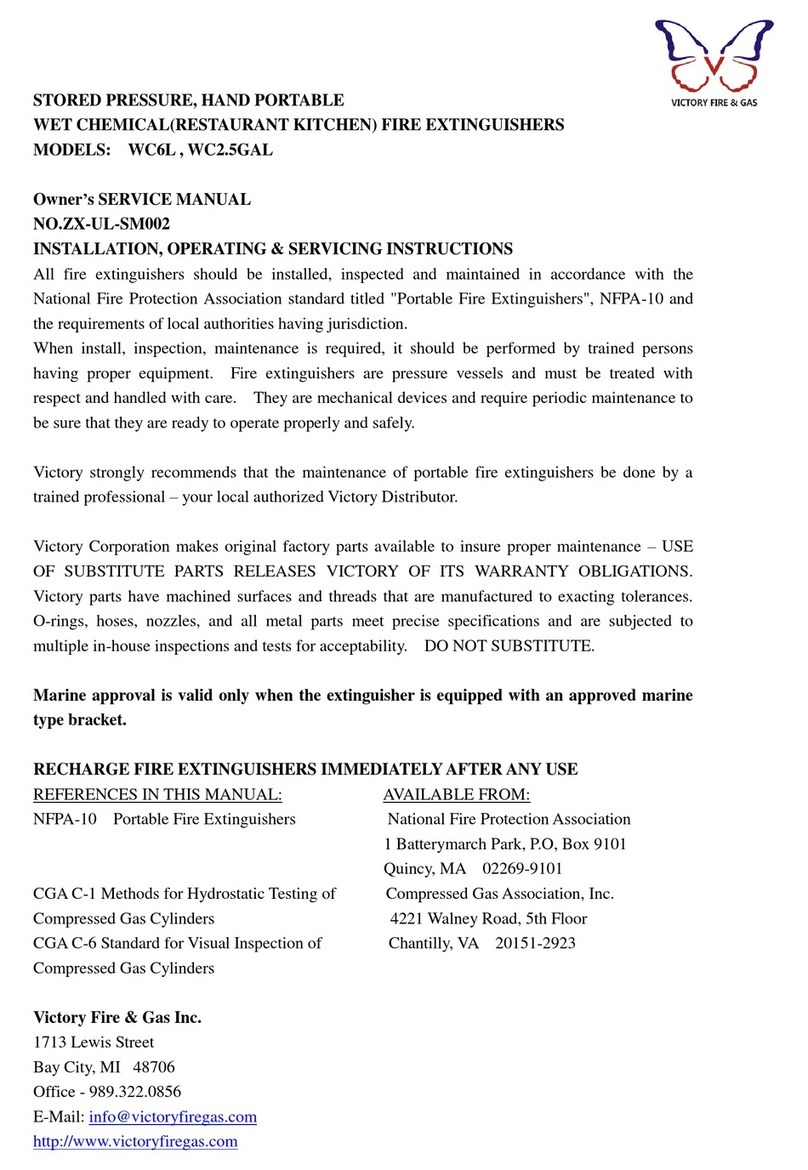
Page 2 of 8TOTALPAC®3
Integrated Fire Protection System
Mechanical Section - Wet Pipe System
FM-076A-0-59D
1.3Placing the system in service
1. Verify that the main water supply valve (D1) is CLOSED
and that the system is free of leaks. CLOSE main drain
valve (D3).
2. OPEN the inspector's test valve and all auxiliary vents to
allow air to escape from the system while it is filling with
water.
Note : For proper operation of the wet pipe system and to
minimize unwanted (false) alarms, it is important to
remove trapped air from the system when filling it with
water. Air trapped in the system may also cause
intermittent operation of the water motor alarm during
sustained flow of water (such as the flow required by an
open sprinkler or the system test valve). Consider
installation of auxiliary vents to facilitate venting.
3. If desired, CLOSE the hydraulic alarm cut-off valve (B6)
to prevent local alarms from operating while filling the
system.
4. Slowly OPEN the main water supply valve (D1).
5. Allow the system to be completely fill with water. Allow
water to flow from the system test valve, and from any
other open vents provided, until all air is exhausted from
the system.
6. After all air is exhausted from the system, CLOSE the
inspector test valve and all other open vents.
7. If installed, the excess pressure pump (B14) should
stop.
8. The pressure gauge (B13) on the system side of the
alarm check valve (A1) should indicate water pressure
equal or greater than the pressure gauge (B12) located
on the supply side of the alarm check valve.
9. OPEN the hydraulic alarm cut-off valve (B6) and verify
that all other valves are secured in their normal
operating position (see paragraph 2.1 NORMAL
CONDITION of the current section).
10. Notify the AUTHORITY HAVING JURISDICTION, remote
station alarm monitors, and those in the affected area
that the system is in service.
For additional information describing individual
components of the specific Viking wet pipe system, refer to
current Viking technical data, available on Viking web site.
Also refer to applicable installation standards, codes and
Authorities Having Jurisdiction.
1.4System Operation
1.4.1 In the SET condition
In the normal SET condition, the system piping is filled with
water. The water pressure is kept equal or higher on the
system side of the alarm check valve (A1) than on the
water supply side.
If applicable, the excess pressure pump (B14) maintains
higher pressure on the system side.
1.4.2 In a fire condition
When an automatic sprinkler fuses on the system piping
network, it allows the water to flow. The alarm check
valve (A1) opens by the flow of water allowing pressurized
water to enter the alarm port to activate the alarm
devices (C1 and optional C2 and C3).
Sprinkling continues until the main water supply valve (D1)
is manually closed.
1.4.3 Supervisory condition
Intermittent alarms
Bleed air from the high points of the system. If the system
pressure is seldom, if ever, greater than supply pressure,
drain the system and check valve rubber and by-pass
check valve rubber for cold flow and sealing efficiency.
Clean valve seats and replace rubbers as necessary.
False alarms
If water pressure surges produce false alarms check the
following:
a) Air trapped in the system piping network can cause
false alarms, alarms to cycle on and off during testing
and other nuisance problems. To fix this problem,
bleed as much air as possible from the trapped high
points of system piping. This condition can be
minimized by opening the remote inspectors test
valve and slowly filling the system with water when
placing the system in service.
b) Clean drain restriction on retarding chamber trim.
c) Clean or replace check valve on external by-pass
trim.
d) Clean or replace alarm valve clapper rubber.
